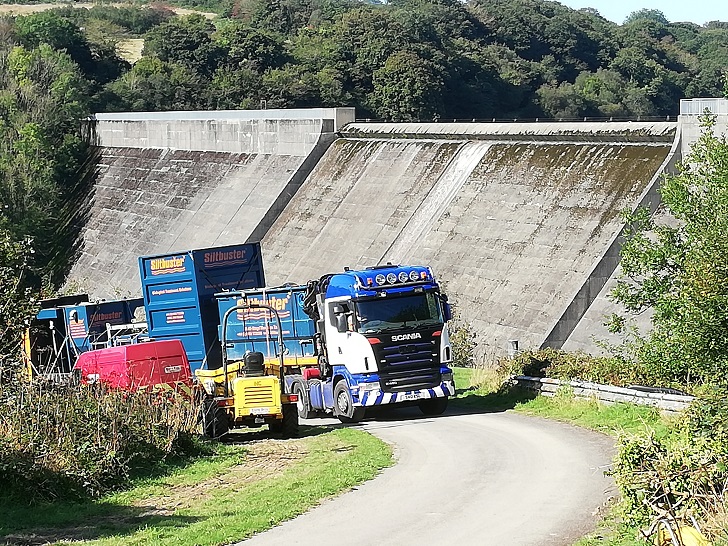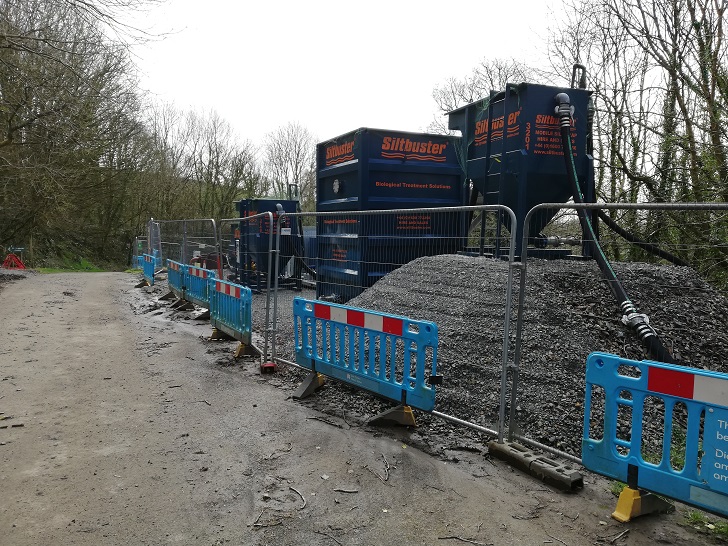

When the visitor centre at a country park in southwest Wales needed refurbishment, the original wastewater treatment system was deemed inadequate for increased visitor numbers. A UK water treatment specialist stepped in with a temporary solution while contractors built a new rotating biological contactor (RBC) system.
Welsh Water’s new visitor centre in the Llys y Frân Country Park Reservoir, Pembrokeshire, will include a new outdoor activity zone, as well as a waterside cabin, which will support walkers, cyclists, and water sports enthusiasts. The centre will also include staff offices and meeting rooms, plus a café, and cycle hire and repair facilities.
A total of £4 million is being spent on the project, with £1.7m of EU funding, secured through the Welsh government’s Tourism Attraction Development Programme.
The existing Llys Y Frân Wastewater Treatment Works (WwTW) was too small to cope with the expected increase in flow/load following the refurbishment and would not have met future needs, or a more stringent, discharge consent. Civil engineering contractor Young Bros (YB), was responsible for demolishing the works and constructing an enhanced capacity Rotating Biological Contractor (RBC) treatment works in its place.
However, it was not possible to do this alongside the existing works, due to the lack of space, so YB asked Siltbuster Process Solutions (SPS) to provide a temporary solution to treat the waters generated on-site while the new RBC system was under construction.
Temporary solution SPS developed a temporary treatment solution in conjunction with Welsh Water (DCWW). Once the contract had been awarded to YB, SPS visited the site with them to determine exactly where the temporary WwTW needed to be located and to finalise the scope of supply.
Following an onsite consultation with YB, SPS proposed locating its temporary treatment works on an area of land below the existing works. This meant the old works could be demolished and the new upgraded WwTW could be built in the same location. It also eliminated the need for YB to pump wastewater in order to feed it and instead make use of the natural gravitational flow.
Iain Moir, technical sales engineer (Municipal), at SPS, explains: “By gravitating the flow of wastewater to our treatment works, we’ve negated certain issues that can arise when using pumps. The domestic wastewater that our works treat contains rags and plastics, which can compromise how effectively pumps are able to work, removing the risk of pump blockage.”
Possible alternative The alternative solution of using tankers, would have meant frequent vehicle movements to and from the site and an on-site liquid waste storage facility. Jordan Jones, project manager at YB, comments: “The great thing about SPS’ work is that it means minimal wastewater must be tankered off-site while the RBC is being built. Tankering can be really expensive, and SPS’ solution has ensured that unplanned costs associated with tankering waste flows has been avoided. As well as that, with the daily lorry movements to and from site that would have been required, we would have risked upsetting locals, which nobody wants. Plus, when it comes down to it, SPS’ temporary solution is simply more reliable than using tankers for avoiding pollution events – after all, wastewater can still collect and overflow if you’re purely relying on tankering.”
One of the main challenges on-site is treating the domestic wastewater, such as the flushing of toilets and the draining of shower waters. This water can have a high Biological Oxygen Demand (BOD) and can contain a high concentration of ammonia, which if released to the watercourse, would deplete the dissolved oxygen within it, potentially killing fish and other aquatic wildlife.
The technology To prevent this from happening, SPS designed and installed a bespoke solution that primarily consisted of two HB20 units, tasked with separating suspended solids and associated organic matter from the waste stream, and an MBBR10, which provides the biological treatment stage.
The solution also incorporated Clarity, which is Siltbuster’s new online, real-time water quality and monitoring system. Clarity gives YB an accurate and up-to-the-minute overview of how effectively the system is working and provides a text-warning system if something is not working quite as it should.
YB built a new chamber alongside the existing WwTW and installed a mesh bag screening system within it to trap most of the rags and plastics with flows, which then gravitated it to the temporary WwTW supplied by SPS. The first HB20 Lamella settlement tank acted as a primary settlement tank, enabling the settleable organic matter to be settled out, with the resulting settled sewage passing on to the next stage of the process in the MBBR10 unit.
The MBBR10 is a moving bed biofilm reactor which uses a duty/standby air blower system to provide the required oxygen, and to keep the media moving and enable the soluble organic matter to be broken down by the fixed film micro-organisms which grow on the media. This biomass is then settled out in the downstream HB20 Lamella settlement tank acting as the secondary settlement tank, with the clear liquid then discharged to the existing final effluent discharge point. The settled sludges from both HB20s are then pumped to a local sludge storage tank, with the desludge frequency controlled by means of an adjustable timing system on the pump skid.
Jordan Jones concludes: “SPS’ solution has enabled us to easily meet our discharge criteria of less than 20 mg/l BOD, 30 mg/l total suspended solids and 10 mg/l ammonia. Not only that, but its team of experts has trained our staff to operate the plant, and has been regularly visiting the site to ensure it is performing as it should be, and to discuss any small alterations that will help optimise the operations. Until the RBC is up and running, we’re safe in the knowledge that SPS’ kit is keeping us fully compliant.”
The area of the ground prepared for the SPS temporary WwTW will be returned to its former appearance with grass by YB prior to the re-opening of the visitor centre, leaving no sign that it has been there for nearly six months.






